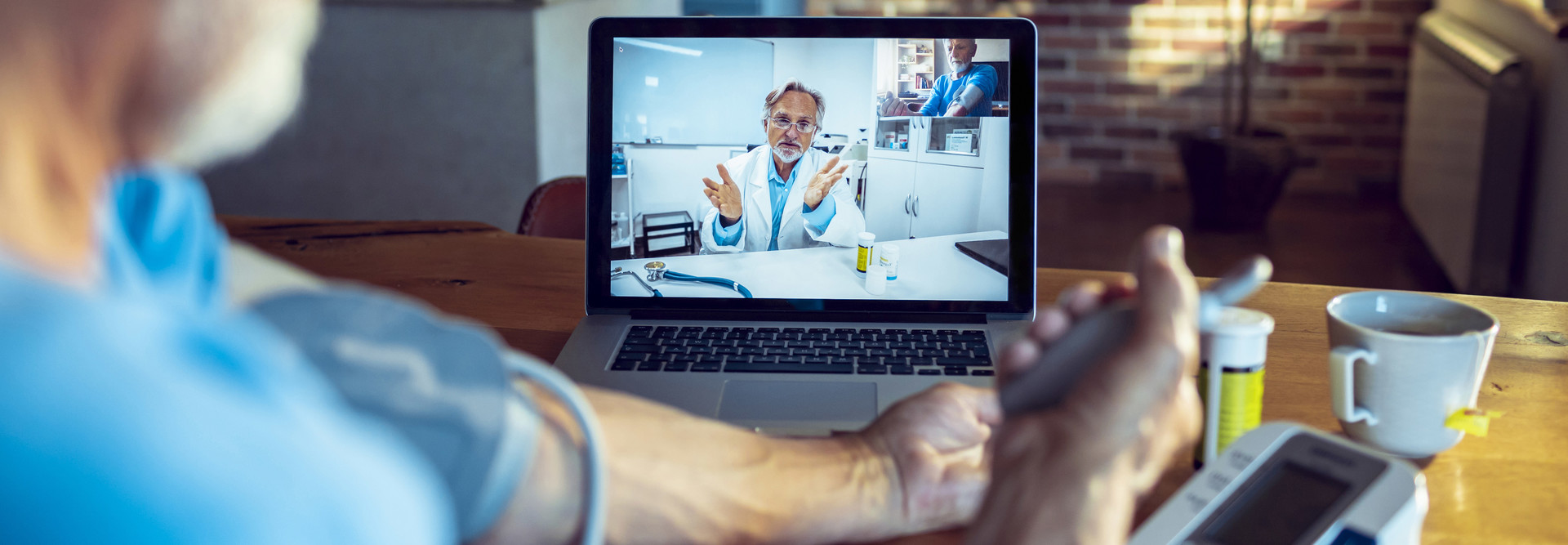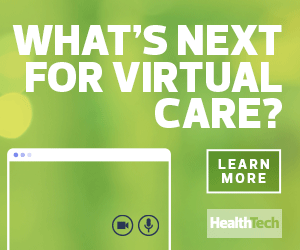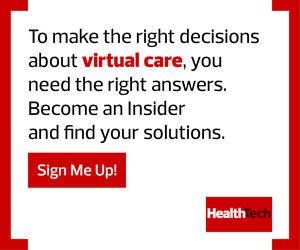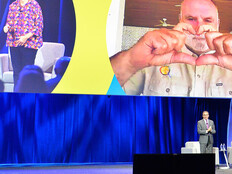As healthcare facilities work to reimagine their interiors with data-driven design and enhanced screening protocols, there’s no doubt videoconferencing tools will remain.
Over time, some organizations may look to a hybrid model that gives patients and practitioners flexibility to use telehealth when needed, as a recent article from global think tank Rand notes. Others, such as Danville, Pa.-based Geisinger, grew the number of specialties providing virtual care — and plan to keep it that way.
“For an appointment where a physical exam isn’t necessary, it really is a great option,” Tejal Raichura, who directs Geisinger’s Center for Telehealth, says in a company blog post. Geisinger has more than tripled its virtual care roster to support 70-plus specialties.
Here are some of the new and evolving ways telehealth is meeting the needs of patients.
Telehealth for Physical Therapy, Cardiology, Dentistry and More
Many aspects of chronic disease prevention and management can be handled via video from a patient’s home or from rural hospitals connecting with larger healthcare systems, according to guidelines from the Centers for Disease Control and Prevention.
They include telehealth programs for diabetes management, smoking cessation, epilepsy follow-up care and cardiac rehabilitation. These efforts, the CDC notes, can serve audiences that historically have faced barriers to receiving in-person care — and many efforts achieve the same results as offline visits, according to cited research.
After all, patient empowerment and engagement, no matter how it’s delivered, can lead to better outcomes.
This is critical in telecardiology programs such as the one offered at Grand Rapids, Mich.-based Spectrum Health, whose cardiologists can give full exams via telemedicine for patients at regional hospitals. Nearby, patients at Detroit’s Henry Ford Health System may complete their important cardiac rehab — outpatient exercises and counseling that have historically seen low in-person participation — virtually.
DISCOVER: Six reasons why telehealth is now more important than ever.
In some cases, physical therapy can be delivered from a distance. “Even though we can’t put our hands on the patient, we can ask them to perform actions, and looking at the action, we can make a determination about muscle strength,” Alice Bell, a senior payment specialist for the American Physical Therapy Association, tells MedPage Today. She adds that online therapists can prescribe strategies, manage exercises and assess whether a patient’s walker or a cane has the proper fit, just as they would face to face.
Video can also be crucial to wound care: The medium allows clinicians to evaluate for infection — the major cause of wound-related hospital admission — provide care guidance, and facilitate an antibiotic prescription if needed, note the authors of a special report in the July 2020 issue of the journal Wounds. Some telehealth software programs can calculate the area of the wound, they add, which is helpful in monitoring the healing process.
There are even some applications for dentistry, for example, allowing a patient history to be gathered via asynchronous communication methods. Consultations can be held online, reducing exposure and easing the decontamination process in an office setting. The practice also can be used to acquire new patients, the American Teledentistry Association says.
Telehealth in the ER Changes Onsite Care Delivery
As the fight against COVID-19 continues, other serious ailments and emergencies don’t stop, nor does the need to preserve bed space and protective equipment.
This is why some emergency departments are equipping themselves with teleconferencing tools to register, triage and even discharge some patients without a face-to-face meeting. By reducing exposure and expediting care for nonurgent cases, clinical teams can still order vital labs and X-rays
These “tele-triage” models leverage videoconferencing and mobile devices for efficiency and safety.
“Now, we can evaluate a patient that may or may not have the flu or a cold or COVID, and you don’t have to put a provider in there with them,” Dr. Judd Hollander, senior vice president for healthcare delivery innovation at Thomas Jefferson University, tells HealthTech.













